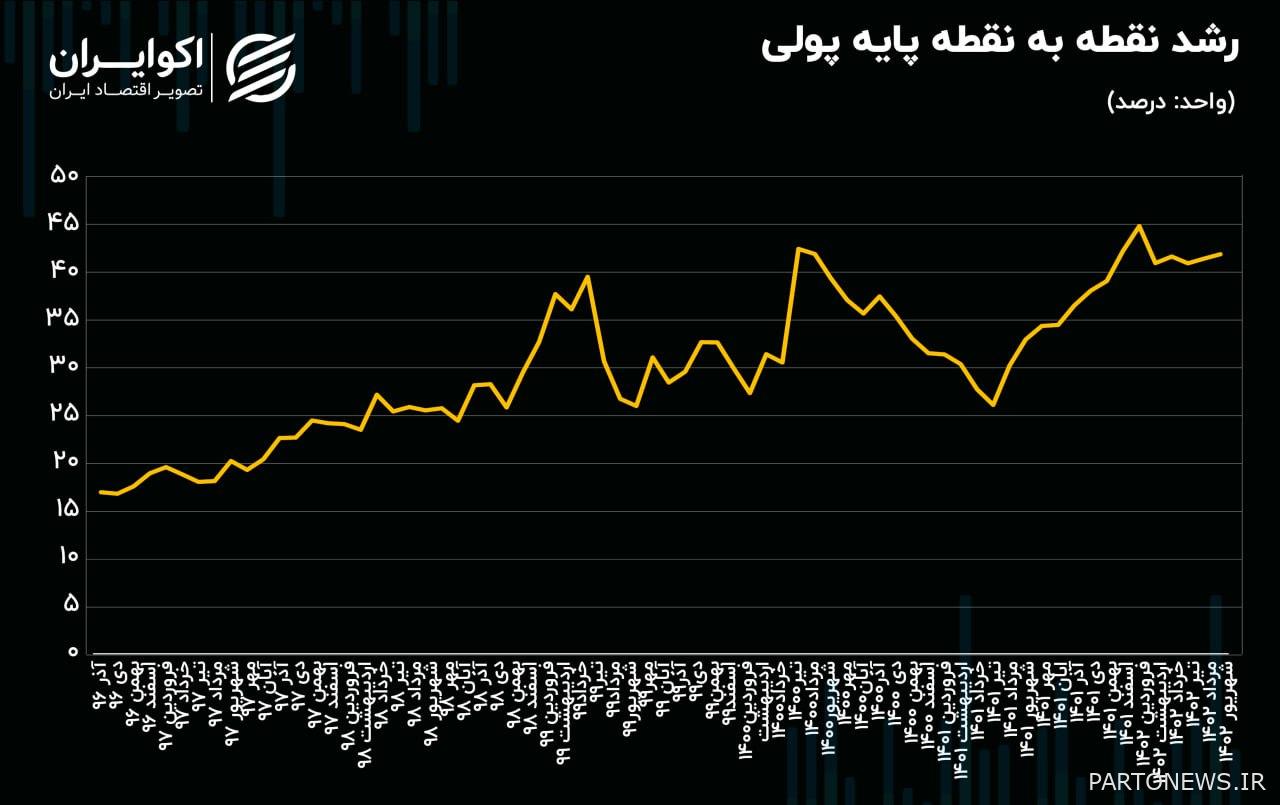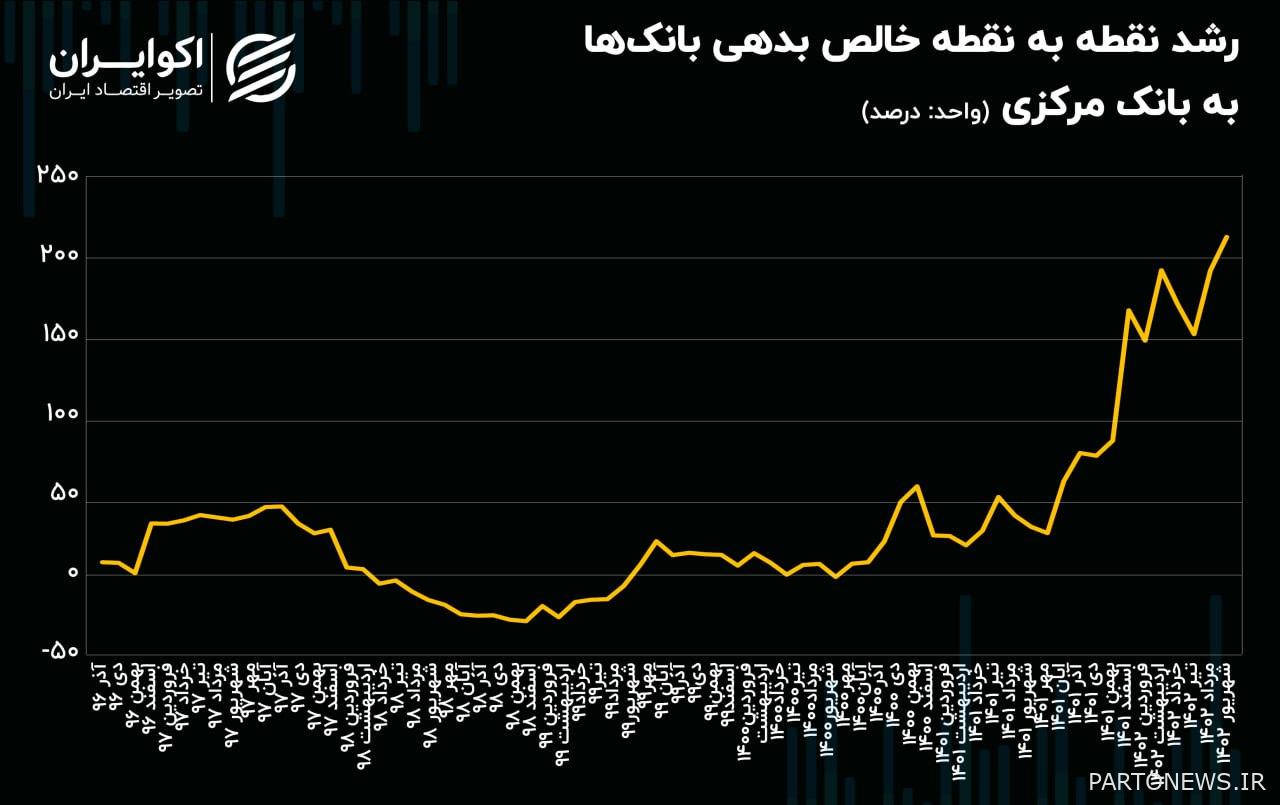Recording the debts of banks to the central bank

In addition to this, the point-by-point growth of the banks’ net debt to the Central Bank has also registered an unprecedented record during the period under review in the report in September 1402.
Some studies citing the characteristic of the creation of pseudo-money by banks and credit institutions state that the growth of liquidity in the society is associated with endogeneity and its volume changes in the society due to the mechanism of banks’ activities and their decisions. For this reason, it can be claimed that the share of banks’ debt is almost the most important component of the monetary base and can change the amount of liquidity in the society with greater strength and intensity.
Monetary base or high-powered money refers to all the assets in the Central Bank’s balance sheet. According to economic literature, the monetary base consists of four components; Net foreign assets of the central bank such as dollars and foreign currency, net debt of the government to the central bank, net debt of banks to the central bank and other items.
Increasing the role of the net debt of banks to the central bank in the monetary base
In different economic periods, the net share of banks’ debt to the central bank has varied from monetary base. According to the statistics published by the Central Bank and based on calculations, in the years 1995-1997, the net share of the banks’ debt to the Central Bank was about 60%. It can be seen that this ratio decreased in 1998 and fell to 30%. Despite fluctuations, the net share of banks’ debt to the central bank reached nearly 20% until 1400, but again after this period, it can be seen that this index has been increasing.
The increase in the net share of the banks’ debt from the central bank has become more intense since the middle of 1401 and finally crossed the 50% mark again from August 1402. In the same way, the data shows that out of the total 981 hems of high-powered money in the economy in September 1402, more than 521 hems of it were due to the banks’ debt to the central bank.
The upward channel of monetary base growth in recent years
In addition to this, it can be seen that the growth of the monetary base is continuously increasing in recent years. In examining the growth of variables, the important point is that short-term fluctuations are not very important, but the long-term trend of growth is important.
The data shows that the long-term growth path of the monetary base has been increasing in recent years and even crossed the 40% mark in 1402. According to the latest statistics provided, in September of this year, the point-to-point growth of the monetary base has reached 42%.

Overtaking the net growth of banks’ debt from monetary base
Based on calculations, since March of this year, the net point growth of bank debt to the central bank has exceeded 100 percent, and the lowest point growth recorded after March (based on the latest available statistics) was in April at a rate of 148.3 percent. This is while at the end of the summer of this year, the net point growth of banks’ debt to the Central Bank exceeded 200% and recorded a record of 213%.
Reasons for banks to borrow from the central bank
The net debt of banks to the central bank increases when banks borrow from the central bank due to liquidity deficit.
The reason why banks are facing a liquidity deficit may be due to the government’s credit facilities or the banks’ own deficits in their balance sheets; For example, the accumulation of risk in the balance sheet of banks or a high share of assets with low liquidity, such as housing or commercial buildings, is considered a type of bank fraud and can only be prevented with the supervision of the central bank.

The quarrel of economists and the importance of the central bank’s monetary core
Some experts say that if the increasing liquidity ratio is controlled, the increase in the banks’ debt to the central bank will not be a concern. Currently, for each unit of powerful currency injected into the economy by the central bank, more than 7 liquidity units enter the society, which is called the multiplier.
On the other hand, some experts believe that the current control of the growing factor is temporary and one day it will finally explode. According to this group, it is possible that the limiting factors of the current increasing rate may lead to the launch of liquidity pressure in the future, and finally, the consequences of the swelling of the inflationary core (monetary base) will plague our economy in the coming years.
Checking the accuracy and accuracy of this analysis requires more data and arguments, which are placed on the shoulders of experts and monetary policy makers of the country. On the other hand, it is obvious to economists that the debt of banks to the central bank is the main driver of the growth of the country’s inflationary core.

